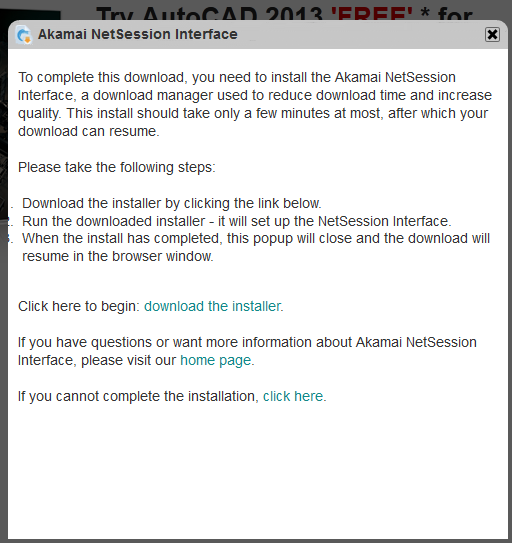In all of the Cad on the Cloud discussion so far, both here and elsewhere, there have been a lot of anti-Cloud comments and very little in the way of response from the pro-Cloud crowd. Participation in the debate from Autodesk people has been minimal. In one way I can understand that, because given the current atmosphere, who would want to stick their head above the parapet? On the other hand, Autodesk wants to position itself as a Cloud leader and obviously needs to bring its customers with it. It is unlikely that many hearts and minds will be won over with press releases and other forms of corporate self-praise. Therefore, it makes sense for someone to get their hands dirty and engage with the plebs.
Step forward Jim Quanci, director of the Autodesk Developer Network. In the last edition of upFront.eZine, Jim was brave enough to enter the fray with a “letter to the editor” response to Ralph’s The Cloud is Dead position. I appreciate that Jim went to some length to compose his epistle and I thought he deserved more of a reply than Ralph’s one-liner. There will probably be a few letters in reply in next week’s upFront.eZine, but I’m placing my own response to Jim’s arguments here. It’s quite a lengthy tome and it would be unreasonable to expect Ralph to publish the whole thing unedited. I have quoted parts of Jim’s letter for the purposes of comment and criticism; for the full context you should read the original in upFront.eZine.
You’ve been at this CAD thing a long time; use more of that long term perspective you have. Think past that time you and I have retired. I think of my two kids in college. My younger son (in engineering school) believes having valuable data (like a mid-term paper) on his PC is an accident waiting to happen. Why would any sane person want to do that?
This is similar to several pro-Cloud arguments I have seen that I find unconvincing. Just because kids do a lot of stuff on the Cloud these days doesn’t mean much of anything. I have a couple of very smart kids myself. Like all kids, not everything they do makes sense, and I’m not about to start copying their behaviour. As people grow up, they start doing different, more mature things. That will, hopefully, include the appropriate use of technology. It may involve storing data locally, on the Cloud, or both. Yes, storing one copy of your work on your PC is indeed an accident waiting to happen. This is something I have learned through difficult experience. No, storing one copy of your work on the Cloud isn’t any more sane, particularly if your ISP is down when you really, really need to get at it to meet a deadline. This is something that Jim’s son will hopefully not need to experience in order to learn.
Jim then gives a potted and somewhat debatable history of CAD on the PC, with the implication that CAD on the Cloud in 2010 is just the same as CAD on the PC in 1982, with the implication that the same kind of takeover will inevitably happen. He concludes that part of his argument as follows:
The naysayers on the cloud could be the same naysayers we saw with the PC, just ‘find and replace’ a few words and the reasoning is identical (control, trust, capability, performance, productivity, etc). ‘Sure PC’s are good for word processing and spreadsheets -– but not CAD. They are just toys.’
Using terms like ‘naysayers’ for anti-Cloud people doesn’t add much to the debate, any more than calling Cloud supporters ‘mistyheads’. That aside, there are several ways in which this argument is flawed. First, as Ralph pointed out, ‘past performance is no guarantee of future returns’. Second, if you do wish to use history as a guide to the future, it is fair to say that the Cloud appears to be an aberration in the overall trend away from the bad old days of centralised computing towards putting control into the hands of individuals. Third, the ‘naysayers’ on the Cloud are generally not the same people who were ‘naysayers’ during the rise of the PC. On the contrary, they are typically those people who supported and actively participated in the PC revolution. They are those who have watched that history evolving and who have learned hard lessons from it along the way, instilling a stubborn resistance to giving up their hard-won control and freedom.
The cost-based naysayers. What makes them think the cost is going to go up?
I have to admit I literally LOL’d at this one. Jim, they think the cost is going to go up because they weren’t born yesterday and they’re not totally clueless. OK, hands up all those people who think that Autodesk and various others are investing hundreds of millions of dollars in the Cloud as part of a cunning plan to ultimately take less money from their customers? Anyone? Nobody? Hang on, there’s one at the back. Thanks, Jim, you can put your hand down now.
Then there are the ‘Unique to the Cloud’ benefits of increased productivity through mobility, collaboration and for all practical purposes unlimited computing power.
It cannot be denied that the Cloud has several unique benefits. Neither can it be denied that the Cloud has several unique drawbacks. The question comes down to where the balance of pros and cons falls for a particular application and a particular customer. The jury is very much out on that one. I have already discussed several of the Cloud benefits, but not many people appear to be that impressed by them. The drawbacks, however, appear to be dealbreakers for many.
Everyone needs to think past today, this year and even the next five years. As you and I know, being of the mature sort with children, five years is the blink of an eye and ten years goes so very fast. The impact of big changes are almost always over sold in the short term (applied to existing problems and processes) and under sold in the long term (it’s hard to envision what the new problems and processes will be in a world we haven’t yet experienced).
I can agree with most of this, particularly the part about it being oversold in the short term. The difficulty of predicting the future also rings true.
Sixteen years ago I bought my first copy of Netscape. The web was oh so slow through dial-up and though thoughtless people with graphics heavy web pages. Back then one could see the web as a marketing, sales and education tool. But no one was predicting Google and Facebook. What will the Cloud enable in a similar period of time?
No idea! But companies that waited till the PC and Web future was clear are themselves mostly in the dustbin of history. Ken Olsen died earlier this year, the PC having ‘done in’ his minicomputer. One might say Compaq was done in by the Web enabled Dell. What software companies will and will not survive the Cloud? One of the biggest software franchises in history, Microsoft Office, may be one of the first victims of a too slow migration to the Cloud.
This attempt to align the Cloud with the winners and the non-Cloud with the losers is specious. The winners and losers haven’t been decided yet, and there may not even be any. In any case, computing history is full of examples of pioneers who did the hard work for little or no reward and relative latecomers who cashed in on it. Also, I remember predictions of doom for Microsoft some years ago when the Internet was ramping up; Microsoft itself was worried by being run over by the Internet. It hasn’t happened yet, though.
Who out there would recommend their children invest most of their time becoming masters of the PC as a great career development investment? How about becoming masters of the web and the Cloud as a good forward looking career development investment?
I’m quite happy for my children to learn to become masters of the PC. Learning web development skills is likely to remain useful, too. Concentrating on one area to the total exclusion of the other is not a wise strategy, because nobody knows what’s going to happen in the computing world by the time they will need those skills. It’s quite likely that many of the skills my kids learn now will be near-useless to them by the time they need to use them, whether those skills relate to standalone or web-based software. Unless they’re learning AutoLISP, of course; that’s a gilt-edged investment. My 25-year-old skills in that arena are still feeding those same kids. Who would have predicted that when VBA was The New Black? And where’s VBA now?
Five years ago when folks like salesforce.com and NetSuite were breaking new ground offering CRM and ERP software as a service, one might have had some doubts. But not anymore. The train has left the station – and folks that missed getting on board better start running hard to catch up (or retire).
I could ask if the clue train stops at Autodesk Station, but that wouldn’t be adding much to the debate either, so I won’t. Instead, I’ll point out that CRM and ERP ain’t CAD. Your smartphone ain’t CAD. Facebook ain’t CAD. CAD on the Cloud is a whole different battle and it needs to be fought on its own merits. CAD is much more than text and a few small raster images, yet Autodesk has stumbled badly even when trying to provide that kind of simple SaaS, for example the poorly received online Help and the abysmal Lithium discussion group software.
Nobody has even proven that CAD on the Cloud can work properly yet. Real, full CAD on the Cloud, I mean. Not a few ultra-niche selected components with a handful of users kicking the tyres. Not a glorified viewer. Proper CAD. With 3D, instant response, full customisation, APIs, that sort of thing. On the Cloud. In bulk, for millions of simultaneous users. Online 3D games like World of Warcraft indicate that it might be possible, but it’s still not exactly CAD, is it? If and when it can be made to work and perform significantly better than standalone CAD, then you’ve got a chance to start selling it, despite various inherent disadvantages, to a bunch of grizzled CAD Managers who have been trained into cynicism by decades of hard knocks. Good luck with that.
How can anybody preach the absolute inevitability of something that might not actually happen at all? That’s not the basis for a rational discussion; it more closely resembles religious dogma. You and the rest of Autodesk management might be convinced, but that really doesn’t matter much at all. What matters is whether your customers are convinced. Have a look at the comments and polls here and elsewhere; do you think they are?




